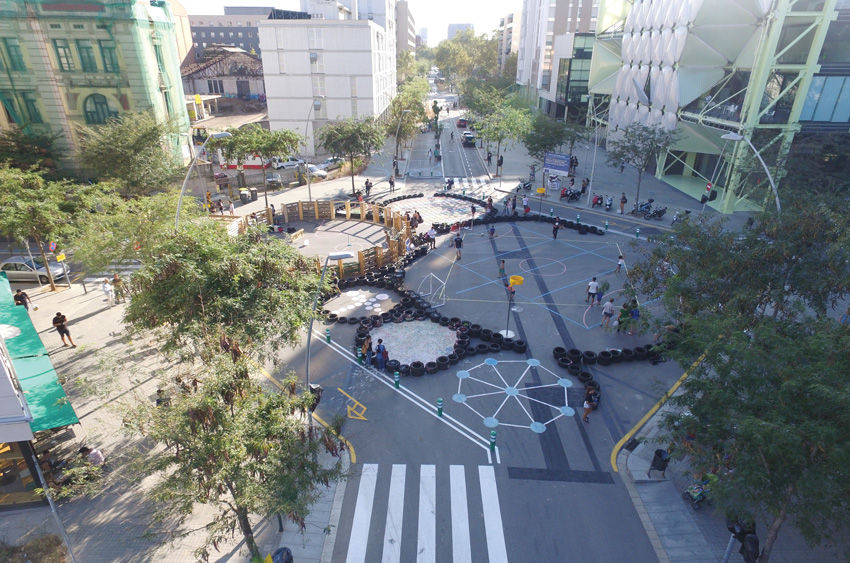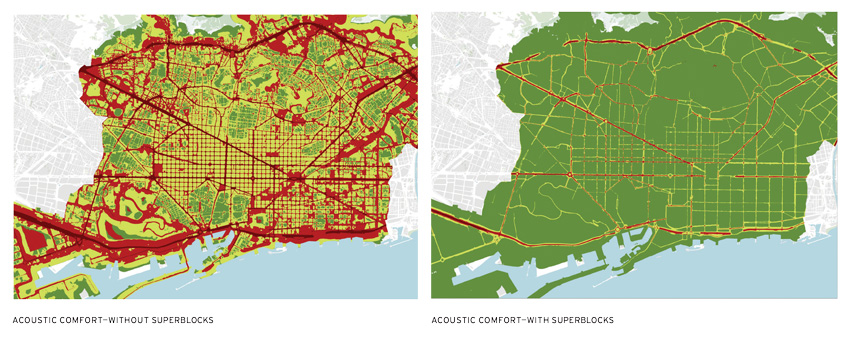Connected Cities
Learning Objectives:
- Explain such terms as smart cities, connected cities, and senseable cities.
- Describe how sensing technologies and big data can be used improve the quality of life and the health of urban inhabitants.
- Explain how networked urban infrastructure can help urban areas resume normal operations after natural disasters, such as earthquakes.
- Discuss some of the potential negative impacts of ubiquitous data-collection devices.
Credits:
This course is approved as a Structured Course
This course can be self-reported to the AANB, as per their CE Guidelines
Approved for structured learning
Approved for Core Learning
This course can be self-reported to the NLAA
Course may qualify for Learning Hours with NWTAA
Course eligible for OAA Learning Hours
This course is approved as a core course
This course can be self-reported for Learning Units to the Architectural Institute of British Columbia
View course on architecturalrecord.com »
Despite the buzz around a few hyperconnected cities and districts being planned and built as urban utopias from the ground up—such as Portugal’s PlanIT Valley, Toronto’s Quayside district, Qatar’s Lusail, and South Korea’s Songdo—the real potential for technology to boost the quality of life lies in existing cities, where most people already live.

IMAGES: © BCN ECOLOGIA
Barcelona is implementing a superblock initiative that is freeing up space previously dominated by cars for other uses.
“The spaces around us are becoming permeated with the Internet of Things, a fusion of bits and atoms,” says architect Carlo Ratti, director of the Senseable City Lab, a multidisciplinary research initiative at the Massachusetts Institute of Technology. “Its manifestations are everywhere. From energy to waste management, mobility to water distribution, city planning to citizen engagement, digital technology is facilitating novel interactions with urban space.” In New York, sidewalk kiosks on former pay phone sites provide access to public Wi-Fi and city services, while in Moscow, an intelligent transport system tackles the city’s near-critical congestion. Connected water infrastructure in Christ church, New Zealand, helped prioritize repairs following a major earthquake; air-quality sensors inform Beijing’s regulation of construction and traffic; and real-time consumption data facilitates distributed energy initiatives in Copenhagen. Around the world, to varying degrees, existing municipalities are retrofitting with new technology in pursuit of familiar priorities, in combinations tailored to each city’s particular circumstances.

IMAGES: © BCN ECOLOGIA
Within each nine-block precinct, no through traffic is permitted and speeds are reduced. To facilitate the transition, speed limits drop in two phases.
But it’s not the technology per se that’s having the impact. It’s not even the data that the tech generates. The significance of “smart” technology comes from how people use the data to inform decisions about their city.
“Smart city” is a catch-all for the use of information and communications technology (ICT) to improve a city’s operations and its citizens’ quality of life. The term lacks consistent usage, even among experts, who generally don’t like it, preferring alternatives with more inherent meaning, such as “connected,” “sensing,” or even the neologism “senseable,” which, says Ratti, implies both “able to sense” and “sensible.” Whatever they want to call it, some cities are crafting a more livable urban fabric, particularly two municipalities perennially acknowledged to be among the world’s most connected, Barcelona and Singapore. Another showing potential to use this data this way is Los Angeles.
Barcelona’s development of its technological infrastructure stretches back about 30 years, and now encompasses more than 40 programs. One of the most transformative may be the city’s “superblocks,” an initiative being instituted in existing neighborhoods in response to increasingly congested streets and associated noise and pollution levels.
Not to be confused with the disconnected, monolithic superblocks that Jane Jacobs effectively discredited, each Barcelona superblock comprises a three-by-three, nine-block neighborhood of traffic-calmed and shared streets. Local traffic can enter only along the center block of each side, drive slowly around that block, and reemerge on the street from which it entered, which limits through-traffic to the perimeter. Within the block, the scheme liberates more than 70 percent of the surface previously occupied by cars, reducing noise, improving air quality, and providing much-needed public space.
The clustering of blocks, exclusion of traffic, and installation of picnic tables, play areas, and potted trees may seem like an analog initiative, but it rests on “data-integrated decision-making,” says Salvador Rueda, director of the Agència d’Ecologia Urbana de Barcelona (BCN Ecologia) and originator of the superblock program. Rueda first proposed the superblock concept in 1987 (even then, noise and poor air quality were marring city life), but a lack of reliable projections about traffic impacts stalled it. Now, with contemporary sensing and simulation technologies, says Rueda, “we can use data to advocate, to plan, and to verify.”
For example, increasingly sophisticated monitoring equipment has enabled the creation of a network of fixed and moving sensors that connect with ICTs and a cloud-computing process. These make it possible to assess a range of air-quality parameters—particulates, nitrogen dioxide, and other pollutants—and to generate accurate, real-time estimates of doses inhaled daily by residents and commuters. Similarly, traffic flow is measured with sensors (mainly cameras) positioned in intersections, superblock access roads, and calmed streets.
Variables analyzed through data-based simulations and subsequent verifications (conducted by validating simulation results with on-street measurements and other local data) include traffic, public transport, and cycle routes; beyond mobility, they include environmental impacts such as air quality, noise, thermal comfort in public space, green surface and soil permeability, greenhouse-gas production, and biodiversity. It even quantifies more nuanced factors, such as social cohesiveness, which is measured by assessing diversity of income, culture, and age among people living in a superblock, as well as the provision and spatial distribution of social housing and urban amenities. Using comparative risk assessment and other standard methodologies, Rueda’s team can estimate preventable premature mortality, gains in life expectancy, and economic impacts related to the superblocks. “A scientific approach based on data allows decision-makers to understand what the improvements will be if they implement the idea,” says Rueda.
To date, five superblocks have been implemented, three are in development, and three more were announced in April. (Insufficient community consultation resulted in opposition to one of the projects, but that subsided as the benefits—especially the new social spaces—became clear. Now the superblocks’ popularity is raising concerns about gentrification.) The city’s transit system has been overhauled from radial to orthogonal routes that coordinate with the superblock grid.
If realized as envisioned in Barcelona’s Sustainable Urban Mobility Plan 2013–2018, there will eventually be 503 superblocks city-wide.

IMAGES: © BCN ECOLOGIA
If realized as envisioned in Barcelona’s mobility plan, the superblocks are projected to reduce traffic and bring about a host of associated benefits, including shortened waits for public transit, enhanced safety, improved air quality, and noise-pollution reductions (above, left and right), with red indicating zones with high noise levels.The scheme is projected to achieve a 21 percent reduction in overall traffic, which will shorten trip times and improve safety, reduce the wait for public transit to an average of two minutes, bring air pollution levels citywide within recommended values (currently over 40 percent of residents live with excessive pollution), allow for increased social connectivity and green space, and prevent an estimated 670 pollution-related premature deaths annually. “The reduction of impacts and the improvement of the quality of life is huge,” says Rueda.















